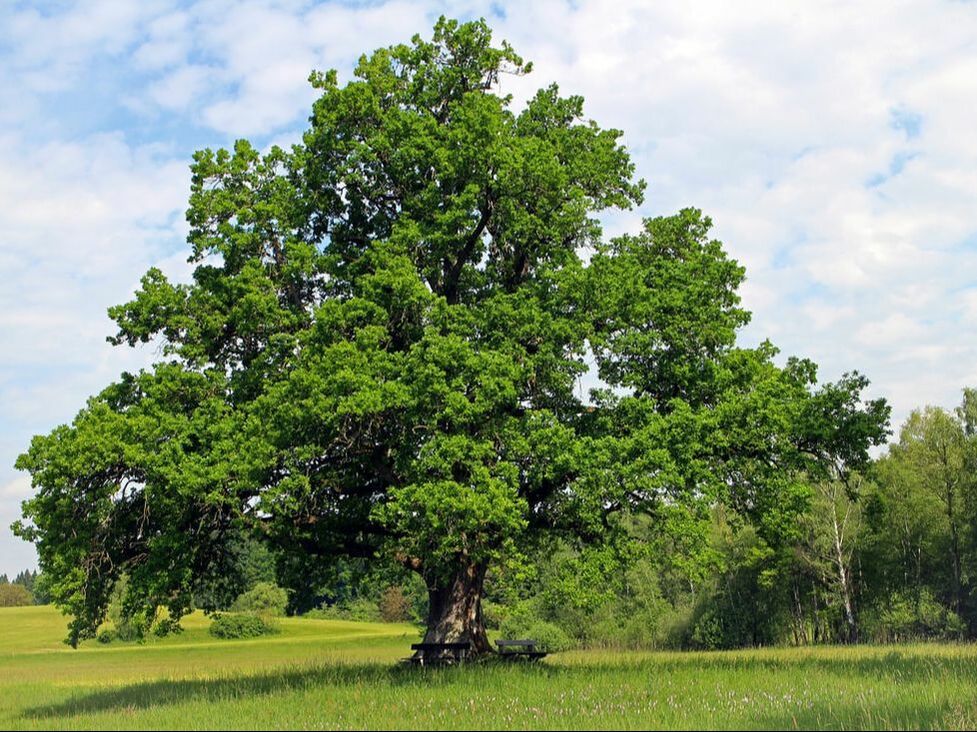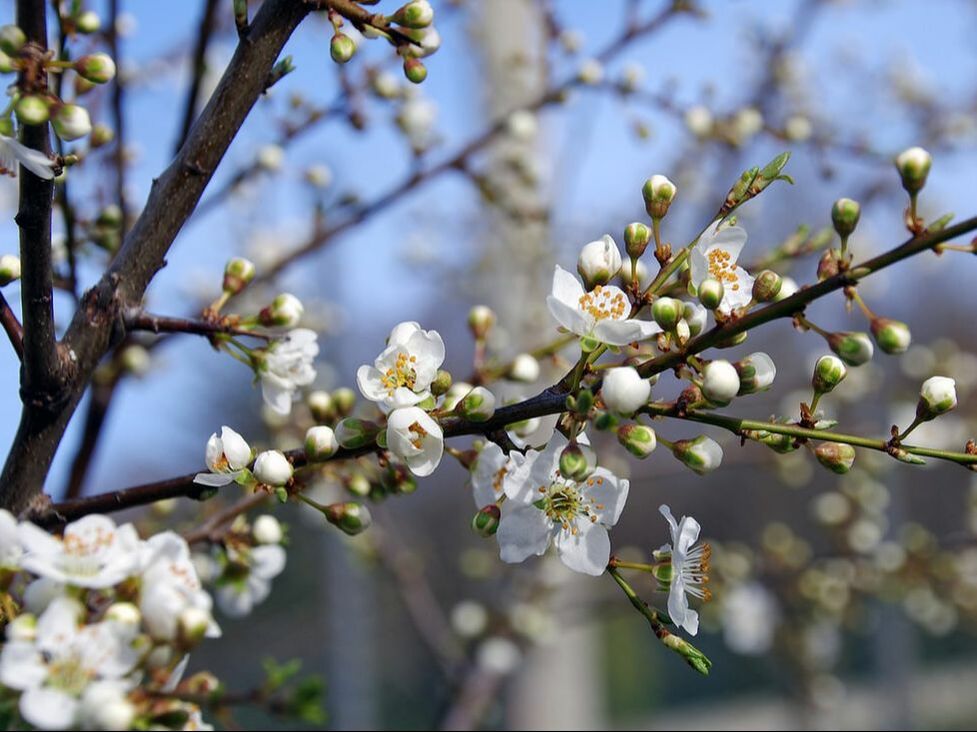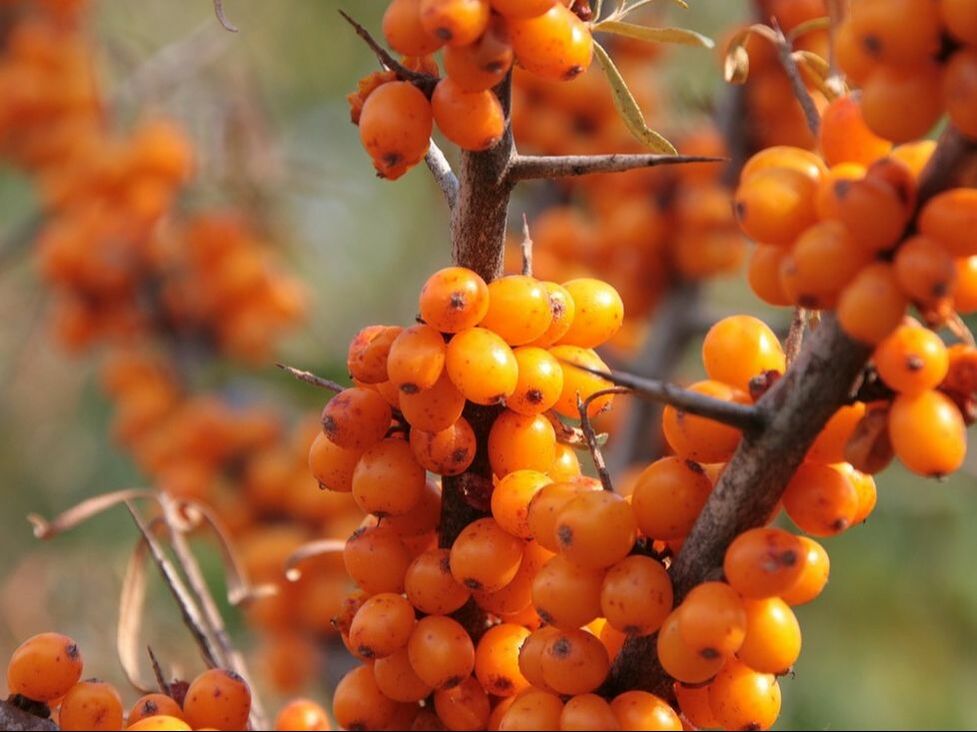Trees
Trees
Trees provide food and hibernation sites for caterpillars
and aphid honeydew for adult butterflies.
and aphid honeydew for adult butterflies.
Butterflies are often associated in our minds with wild-flower meadows or flowery gardens but a high proportion of British butterflies live in woodland, eating the leaves and drinking the nectar of woodland flowers.
Several are actually tree dwellers with caterpillars that eat the buds and leaves of trees, and adults that feed on aphid honeydew.
At least one species, the Goat Moth, takes things to extremes. Instead of feasting on the buds and leaves of the tree, the caterpillars feed on the bark and trunk. The adults don't eat at all.
DECIDUOUS TREES AND NATIVE CONIFERS ADD ENORMOUSLY TO BIODIVERSITY AND MUST BE PRESERVED, AND THEIR NUMBERS INCREASED.
Trees like Oak and Elm take a long time to reach maturity, but we can all find a space for fast growing species like Willows, Blackthorn and Buckthorn, which are readily available from hedging suppliers.
Several are actually tree dwellers with caterpillars that eat the buds and leaves of trees, and adults that feed on aphid honeydew.
At least one species, the Goat Moth, takes things to extremes. Instead of feasting on the buds and leaves of the tree, the caterpillars feed on the bark and trunk. The adults don't eat at all.
DECIDUOUS TREES AND NATIVE CONIFERS ADD ENORMOUSLY TO BIODIVERSITY AND MUST BE PRESERVED, AND THEIR NUMBERS INCREASED.
Trees like Oak and Elm take a long time to reach maturity, but we can all find a space for fast growing species like Willows, Blackthorn and Buckthorn, which are readily available from hedging suppliers.
WYCH ELM
|
OAK
|
BLACKTHORN
|
BUCKTHORN
Purging Buckthorn (Rhamnus cathartica) and Alder Buckthorn (Frangula alnus) on wetter soils, are the foodplants of caterpillars of the BRIMSTONE butterfly.
It is found throughout England up to the Lake district, and in Ireland and Wales, wherever buckthorn grows. |
The PURPLE EMPEROR (Apatura iris)
This is another butterfly of woodland. Its larvae feed on the leaves of Sallow willows (Salix spp.) especially Goat Willow (Salix caprea), while the adults feed mainly on aphid honeydew.
The GOAT MOTH (Cossus cossus)
This moth feeds on trees, not on the juicy buds or leaves but on the markedly less appetising bark and trunk of a wide range of deciduous trees.
The female lays batches of eggs in crevises in the bark, behind which the emerging caterpillars feed before burrowing into the harder timber beneath where they eventually form a network of tunnels. There they stay for three or four, even five years before, at 40 to 60mm in length, they emerge to pupate and develop into mature moths with a wingspan of 64 mm to 84 mm. This makes it an exceptionally big and long-lived lepidopteran, as most butterflies and moths complete their whole life-cycle in less than a year; often only about two months in the case of the first brood of the season, the final broods spending most of their lives in hibernation.
As it feeds, sap, as well as frass and sawdust, drips from the entrance to the hole which can be 20 mm in diameter, and it's the sight of a Purple Emperor butterfly or other honeydew eater having a change of diet that often alerts one to the presence of the Goat Moth larvae.
Having escaped from their subterranean existence in the tree-trunk you might expect the adults to celebrate with a stiff drink of flowery nectar, or at least honeydew, but adult Goat Moths do not feed at all. The mouthparts in the caterpillar which were adapted to tough chewing don't develop into nectar sucking proboscises.
The Goat Moth is widespread throughout the British Isles, but rare enough to be designated a Biodiversity Action Plan priority species. The 'Goat' in its name refers to the smell of its caterpillar being likened to that of a goat.
This is another butterfly of woodland. Its larvae feed on the leaves of Sallow willows (Salix spp.) especially Goat Willow (Salix caprea), while the adults feed mainly on aphid honeydew.
The GOAT MOTH (Cossus cossus)
This moth feeds on trees, not on the juicy buds or leaves but on the markedly less appetising bark and trunk of a wide range of deciduous trees.
The female lays batches of eggs in crevises in the bark, behind which the emerging caterpillars feed before burrowing into the harder timber beneath where they eventually form a network of tunnels. There they stay for three or four, even five years before, at 40 to 60mm in length, they emerge to pupate and develop into mature moths with a wingspan of 64 mm to 84 mm. This makes it an exceptionally big and long-lived lepidopteran, as most butterflies and moths complete their whole life-cycle in less than a year; often only about two months in the case of the first brood of the season, the final broods spending most of their lives in hibernation.
As it feeds, sap, as well as frass and sawdust, drips from the entrance to the hole which can be 20 mm in diameter, and it's the sight of a Purple Emperor butterfly or other honeydew eater having a change of diet that often alerts one to the presence of the Goat Moth larvae.
Having escaped from their subterranean existence in the tree-trunk you might expect the adults to celebrate with a stiff drink of flowery nectar, or at least honeydew, but adult Goat Moths do not feed at all. The mouthparts in the caterpillar which were adapted to tough chewing don't develop into nectar sucking proboscises.
The Goat Moth is widespread throughout the British Isles, but rare enough to be designated a Biodiversity Action Plan priority species. The 'Goat' in its name refers to the smell of its caterpillar being likened to that of a goat.



